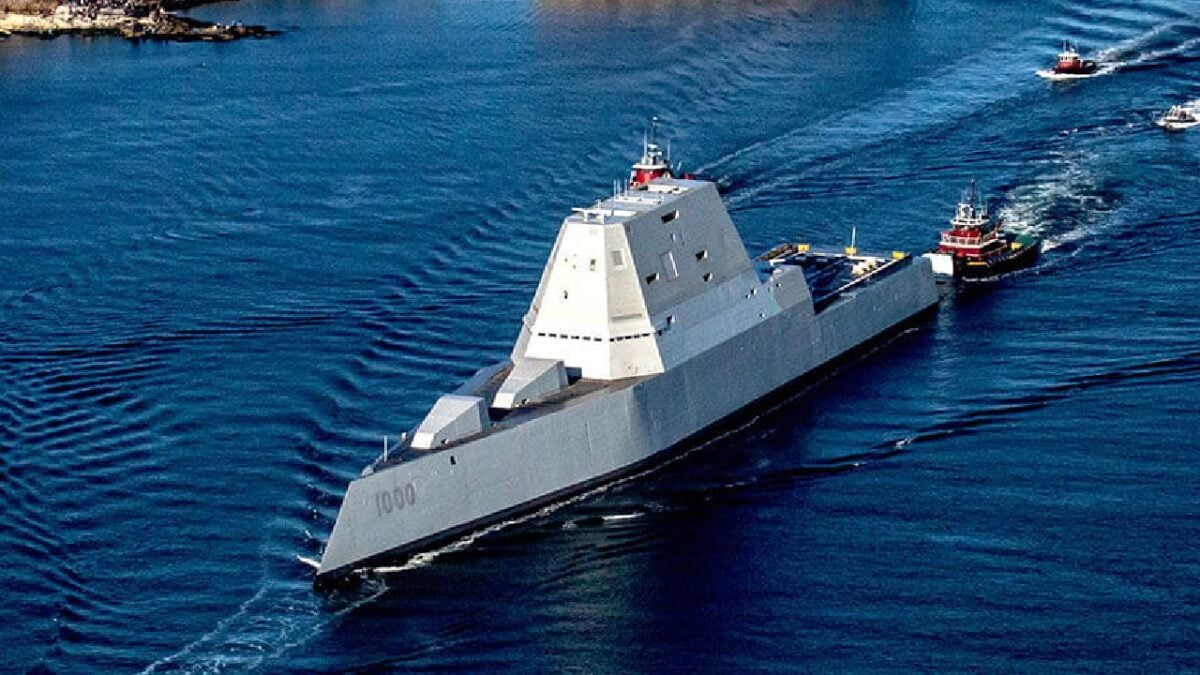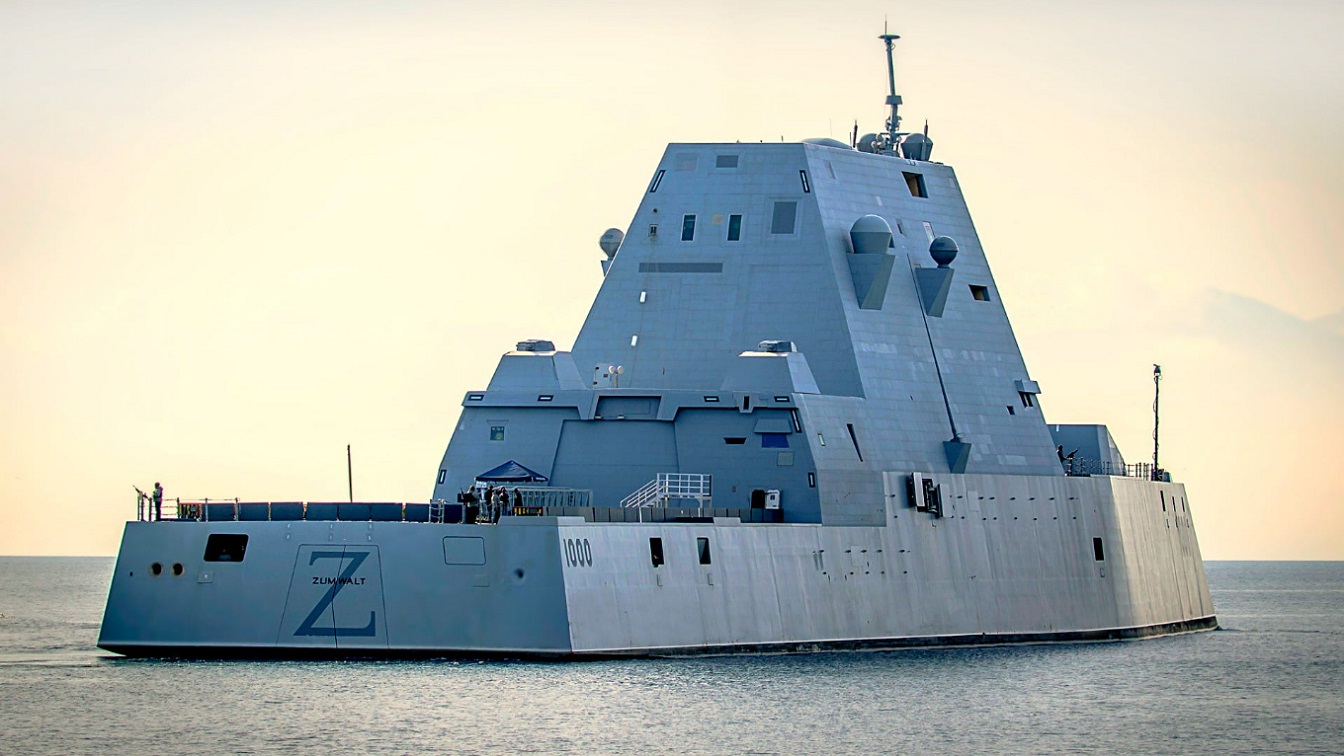The U.S. Navy is rushing to get hypersonic weapons on its ships and submarines. The service has plans to install the Conventional Prompt Strike hypersonic missile on the stealth USS Zumwalt guided missile destroyer by 2025 and on a Virginia-class submarine by 2029. The Zumwalt is expected to be in port in 2025 and the Navy will work to fit the missile on the ship and integrate it with its weapons systems. Meanwhile, on the submarine front, workers must test the capability of sea launch before the Conventional Prompt Strike missile can be mounted on the nuclear-powered fast attack Virginia-class boat.

Zumwalt-class destroyer. Image Credit: Raytheon.
The U.S. Navy Goes Hypersonic
The Navy knows it must exhibit a sense of urgency as Russia and China forge ahead with their hypersonic weapons programs. Vice Admiral Johnny Wolfe said, “time is not our friend,” when referring to the Conventional Prompt Strike project. The schedule has slipped a year for the Virginia-class installation as the Navy originally figured it could integrate the Conventional Prompt Strike weapon in 2028.
Learning from Testing
The extra year is needed to wait on the future USS Arizona submarine as it constructs its Virginia Payload Module to launch the hypersonic missile. Despite the delay and some difficulty in testing, Wolfe believes the designers and engineers of the Conventional Prompt Strike have learned extensively in previous years and he feels confident that the weapon will be delivered on schedule. The timeline has been shortened compared to a normal acquisition, testing, and evaluation period to get the hypersonic in sailors’ hands as quickly as possible. The Navy announced Conventional Prompt Strike in 2018, so the service has made admirable progress in just four years.
Navy-Army Program
The Navy is working with the Army on Conventional Prompt Strike and the army is also looking at ways the missile development can be sped up to be deployed faster by 2023. The Army’s version will be called the Long Range Hypersonic Weapon. The branch is looking to use ground-based launchers for their weapon, so the rocket motor will have to engage quickly after launch.
Tops the List of Needs for the U.S. Military
Conventional Prompt Strike is a critical priority in the Pentagon’s latest National Defense Strategy and Missile Defense Review. The missile uses a hypersonic boost-glide propulsion that enables speeds of over MACH 5 and in-air maneuverability for better target acquisition. CPS can use variable altitudes to evade detection and tracking.
Testing Ongoing
The Army and Navy just completed a rocket test that used 11 different experiments to evaluate various aspects of hypersonic flight on October 26. This launch was conducted at Wallops Test Facility in Virginia. The test will provide data for ultra-high temperature flight and sophisticated electronics needed for the Conventional Prompt Strike Program.
Keeping Up with China and Russia
China tested a hypersonic weapon in 2021 in an action that surprised the U.S. military in what Chairman of the Joints Chiefs of Staff General Mark Milley called a “significant event.” Russia claimed they had launched the hypersonic Kinzhal missile three times during the war in Ukraine.
These developments have put a fire under American scientists and engineers to catch up with Russia and China. The United States is behind the eightball on hypersonics, and the CPS program is forging ahead as quickly as possible, but there could be more delays as the Navy must integrate the weapon into ships and submarines while the army only needs to launch it from the ground. CPS would be a weapon used early on in potential conflict with Russia or China to take out critical targets to suppress enemy air defenses. The capability is thus of utmost importance to U.S. strategy in Europe and the Indo-Pacific.
Expert Biography: Serving as 1945’s Defense and National Security Editor, Dr. Brent M. Eastwood is the author of Humans, Machines, and Data: Future Trends in Warfare. He is an Emerging Threats expert and former U.S. Army Infantry officer. You can follow him on Twitter @BMEastwood. He holds a Ph.D. in Political Science and Foreign Policy/ International Relations.
Want More 19FortyFive articles, news, and analysis on the top military, defense, national security, as well as politics and economics news? Make sure to follow us on Google News, Flipboard, YouTube, Facebook, Twitter, and Linkedin. Also, please don’t forget to sign up for our newsletter here. You can also find our code of publishing ethics and standards here.

